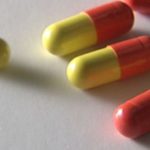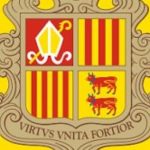“Knowledge is a strategic asset, and our country’s development relies on that very same strategic asset”
- 28 December 2015
- Articles
We have recently interviewed Dra. Norma Cadoppi, President at the Foro Estratégico para el Desarrollo Nacional [Strategic Forum for National Development]. Among their most important projects, this body is working towards the diversification of the Argentine energy matrix by implementing the use of “clean, abundant and affordable energy resources.”
A couple of days ago the Forum held a meeting at the Argentine Engineer’s Center. Its agenda addressed the Sustainable Energy Outlook for 2030. Which topics were covered and which were the main approaches?
The sustainable energy project was one of the projects the Forum undertook this year. It has been in charge of a working group consisting of nine experts specialized in this subject matter. This team comprises authorities from National Universities, the Argentine Chamber of Renewable Energies President (CADER), business executives from various companies and several professionals, all of them deeply committed to the matter.
The event at the Argentine Engineer’s Center was staged within the framework of this project. This time 150 specialists from all over the country were invited. Two foreign specialists took part in the event, as well. One of them was an IRENA officer, which is an United Arab Emirates-based government agency that promotes the widespread adoption and use of all forms of renewable energy. We were highly interested in building a link with this organization since they exclusively devote themselves to clean energy resources, not only from a technological viewpoint but also from the know-how aspects to teach their proper use and adoption.
The opening remarks were delivered by three economists. One of them, Dr. Aldo Ferrer, expressed the importance of incorporating renewable energy into the national macroeconomics. Afterwards, they yielded the floor to the speakers. The Toyota company introduced a new car featuring non-polluting technologies and, a casual urban mobility design available in specific locations so that the user picks it up, run errands and returns it when his tasks are completed. Siemens, on the other hand, introduced a smart building and the performance of a “smart city.” The US Embassy Science Advisor spoke about politics in his country and focused mainly on California, where water shortage has given rise to new technologies that enhance its use. And, the Argentine company INVAP presented its progress in connection with the use of wind power.
What proved interesting about this event was its round table: even though all the speakers were experts at their field, many attendees demonstrated the same expertise and shared with them the same traits of success. Clearly, it was a win-win talk.
How is this project likely to continue facing 2016?
We plan to pursue two courses of action in 2016. The first course of action relates to the way in which we will popularize this concept so that society as a whole understands we need to shape our lifestyle to adapt it to the new clean technologies. There is a clear difference between scientific advances and social assimilation. The message we must convey to society is that knowledge is a strategic asset, and our country’s development relies on that very same strategic asset. In that regard, we have moved forward in terms of a strategy that embodies undergraduates from all over the national territory and positions them as leaders and spokespeople of this change.
The second course of action is aimed at charting the path in which Argentina, being rich in natural resources useful to produce clean energy, becomes a regional engine for prompting the neighbour countries to endorse these policies. The first concrete idea we have come up with is organizing an exposition mainly serving two purposes: being the hub of both, an academic and a technological meeting.
What are the expectations and which is the time frame?
Countries like Argentina, where all forms of renewable energy can be found along its territory, are at a crucial moment in the movement towards diversifying that matrix -which has relied upon fossil fuels and gas for pretty much a long time- and, adopting the use of large quantities of clean energy.
It will be quite interesting to see what is the starting point agreed on in that sense. An amendment to Law No 26,190 -Law on Renewable Energy- has been passed prescribing that as from January 1st, 2016 the energy matrix will have to incorporate the use of 8% of renewable energy. It has been estimated that currently its use ranges between 2% and 5% only. Even though much remains to be done, the bindingness of the law acts as a driving force favoring development. Although it seems difficult to fix a time frame, there is no doubt this law paves the way for advance.








